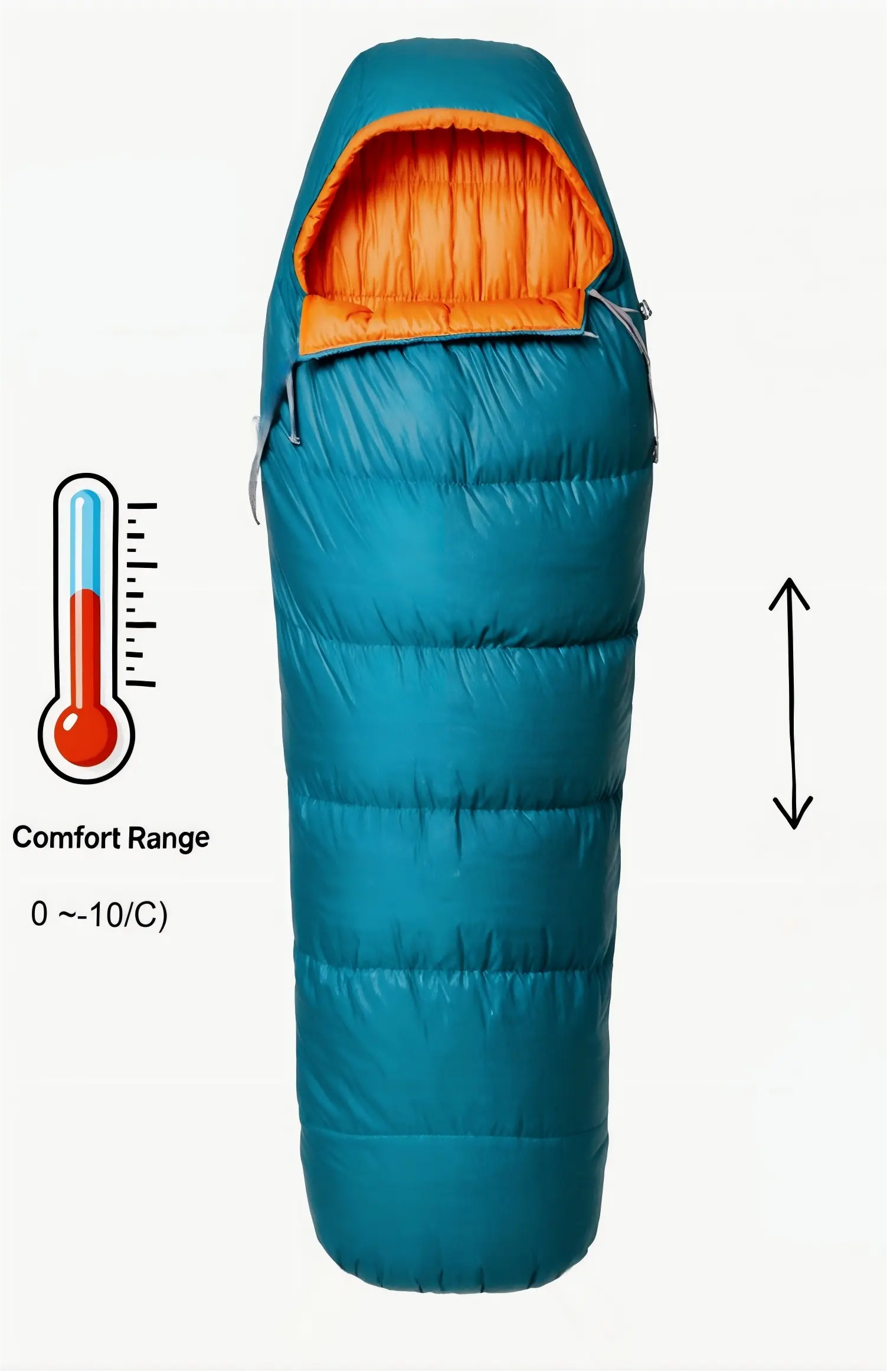2025-09-19
Have you ever had this experience? You unpack your new sleeping bag with great anticipation, and the label clearly states "Comfort -10°C." Confidently, you take it out into the mountains, where temperatures drop to -5°C, expecting a sweet dream. Instead, you find yourself shivering in the biting cold, tossing and turning in the dead of night. At that moment, you can't help but question your life: Is it me who's cold-resistant, or is this sleeping bag lying?
Friends, don't rush to blame yourself or your gear. The problem may lie in misunderstanding the "language" of the sleeping bag temperature label. Today, we'll demystify this mystery, so you can say goodbye to those nights of torment and truly understand your sleep system.
First, it's important to understand that a sleeping bag's temperature label isn't an absolute performance guarantee; it's a reference value derived under extremely specific laboratory conditions. The internationally recognized EN/ISO testing standards require a "standard dummy" to wear basic underwear and lie on a specific insulating pad in still air. This dummy has a standard metabolic rate and body shape.
Comfort Temperature: The temperature at which a standard woman can stretch out and sleep without feeling cold.
Limit Temperature: The temperature at which a standard man can curl up and sleep for eight hours without hypothermia.
Extreme Temperature: The temperature at which a standard woman curled up would risk hypothermia and only survive for six hours.
Has this made sense? You, a real user who might be cold-sick and exhausted that day, actually need a "comfort temperature" or even a higher reference temperature. If that "-10°C" is the limit temperature, then for you, feeling cold at -5°C is not surprising. Temperature scales are about survival, not comfort. This difference is the first lesson of outdoor experience.

Even if you understand the triple temperature scale, the real world is far more complex. Any of the following factors can cause your perceived temperature to plummet:
Personal Factors: Everyone's metabolism is like a different engine. Some people are naturally hot, while others are cold. Your level of fatigue, whether you've eaten enough, and your hydration level all significantly impact your heat production efficiency. Ask yourself, "Do I have enough energy today to last through the night?"
Gear Factors: This is the most underestimated factor! A sleeping bag only insulates the top layer, while insulation underneath your body depends entirely on the R-value (thermal resistance) of your moisture-proof mat. A mat with a low R-value will continuously drain your body heat into the cold earth, rendering even the best sleeping bag useless. Furthermore, sleeping in cotton underwear that becomes cold after absorbing sweat is undoubtedly worse.
Environmental Factors: Mountain winds relentlessly strip away the warm air layer surrounding the sleeping bag (wind chill); humid air significantly reduces the loft and warmth of down; and high altitude itself exacerbates heat loss.
Think about it: Your sleep system is a holistic whole, and your sleeping bag is just one component. Ignoring the other components is like trying to fill a barrel with water; the final volume is determined by the shortest plank.
It's important to understand the principles behind them. Once we understand the principles, we can apply the following techniques:
Pre-Bedtime "Recharge": Do a simple warm-up before bed (such as leg raises and squats) and drink a glass of warm sugar water. Let your body sink into the sleeping bag like a preheated engine.
Internal Conditioning: Don't bundle yourself up tightly. Properly utilizing the sleeping bag's vents to release moisture and keep the interior dry is the key to maintaining long-term warmth. An excessively humid interior can dramatically reduce warmth.
Additional gear: Stuff a durable hot water bottle into the foot of your sleeping bag; wear a fleece hat (the head dissipates significant heat); and wear a dry wool base layer. These small things can make a real difference.
A well-designed sleeping bag is its most important tool. For example, the Disanji design team understands that details can make all the difference. Many of our sleeping bags feature a three-dimensional footbox to prevent your feet from pressing against the bottom of the bag, thereby reducing warmth. A draft-proof barrier that fits snugly around the neck prevents hot air from escaping around the shoulders and neck. And carefully selected high-loft goose down provides extreme warmth while ensuring greater compressibility and lightweighting. These features are designed to provide you with an additional margin of safety and comfort beyond the nominal temperature rating.
When we pick up a sleeping bag again, we shouldn't just focus on the highest number. Instead, learn to read the fine print on labels to find your "comfort temperature." Trust brands that honestly list all temperature indicators and detail the fill type and weight.
At Disanji , we believe honesty is the best policy. Using the harsh environment of the Qinghai-Tibet Plateau as our testing ground, we strive to be conservative and reliable in our temperature labeling. We know that in the real outdoors, trusting your gear means everything. We are committed to providing more than just a product; we provide peace of mind, allowing you to explore the world's "Third Pole" without worry.
Temperature scales are a science, but outdoor sleeping is an art. It's a practice of dialogue with yourself and the environment. Before your next trip, examine your entire sleep system like a master: check your mattress, prepare your clothing, understand your body, and then trust a sleeping bag that truly understands you.
May every peaceful sleep in the mountains be a sweet dream accompanied by the stars.